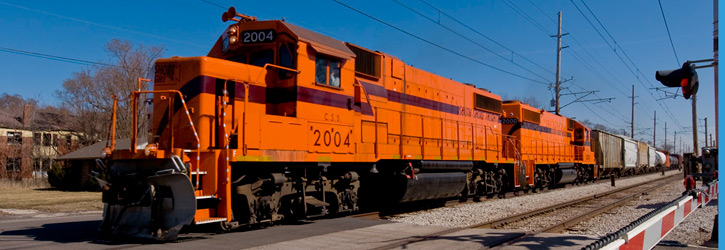
Grade Crossings
RLBA is regarded as one of the most trusted firms in the area of grade crossing expertise. RLBA assists many government entities in infrastructure evaluations, safety assessments and traffic flow analyses relating to grade crossings in a local area or on a state-wide basis.
Select Project Descriptions:
KANSAS DEPARTMENT OF TRANSPORTATION:
Decades of rail line rationalization had left Kansas DOT with an outdated grade crossing database. While hundreds of miles of secondary routes had been abandoned, over 5,800 miles of railroad remain in service, with over 7,800 public and 4,400 private grade crossings. RLBA worked with the Kansas Department of Transportation to assist in updating its database containing locations and characteristics of these potentially hazardous intersections. The firm’s contribution included the collection and analysis of information concerning the number of tracks, type of installed protection and frequency of train and switch engine movement at each railroad grade crossing in the state.
CITY OF FORT COLLINS:
RLBA was engaged by the City of Fort Collins to perform a detailed study of railroad grade crossing-caused delays in the City. The analysis focused on the operations of the Union Pacific Railroad, BNSF Railway and Great Western Railway along the “Riverside Corridor.” Tasks included:
- an examination of all railroad operations within the study area;
- proposing alternative track locations to minimize motor vehicle delays;
- gauging local traffic and emergency services operations impacts associated with grade crossing disruptions; and
- identifying potential public / private infrastructure improvements of varying expense.
The final study included discussions with all railroads involved with the final deliverable consisting of a stand alone report as well as presentations to the City Council.
COUNTY OF ROCKLAND, NY:
RLBA was selected by Rockland County, New York to perform a comprehensive study of all 35 grade crossings in the county on three, distinct rail corridors, one each owned and operated by CSX Transportation, Norfolk Southern and New Jersey Transit and to recommend safety improvements, including establishment of quiet zones where appropriate. The study assessed safety conditions and recommended improvement measures (alternative technologies) to increase the degree of warning and safety for all users at or near railroad crossings. RLBA assessed safety conditions at grade crossings and proposed Supplemental Safety Measures. Study tasks included an inventory of grade crossings, an analysis of existing problems and issues, recommendation of alternative safety measures, public outreach, an implementation plan and identification of funding mechanisms.
